The Great Lakes: North America's 'Third Coast' (Photos)

The Third Coast
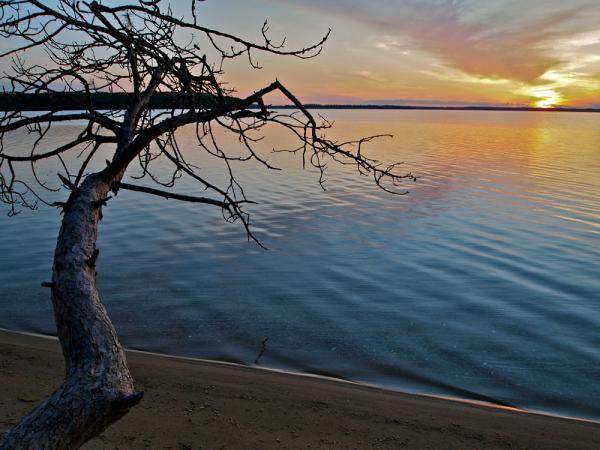
Collectively made up of Lakes Superior, Michigan, Huron, Erie and Ontario, the Great Lakes form the largest group of freshwater lakes on Earth. Squashed between the borders of the United States and Canada in the midst of the North American continent, these giant freshwater seas have long been the defining feature ecologically, culturally and economically in this part of the world since time immemorial.
Extending over 80,545 square miles (206,610 square kilometers) in surface area and over 5,412 cubic miles (22,560 cubic km) in volume, the Great Lakes hold over 20 percent of the surface fresh water on planet Earth. To give some sense of this immense scale, the whole of the United Kingdom could easily fit within the Great Lakes with room to spare.
Despite their beauty and vastness, outside of this region they are often overlooked and unknown. But to many who live along these northern coasts sometimes called the "Third Coast" the Great Lakes are a constant companion, a treasure and a well-kept secret.
North Woods
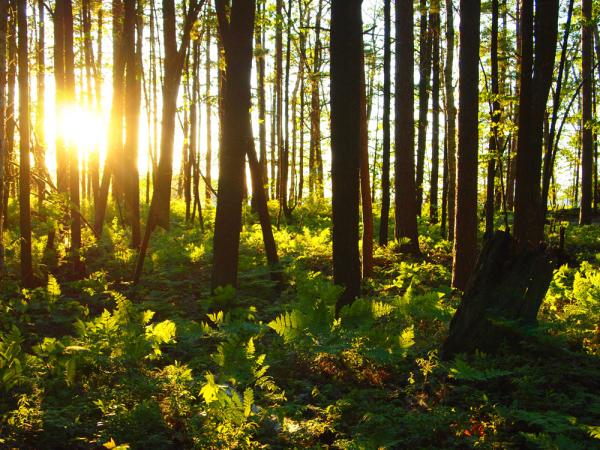
The Great Lakes were formed at the end of the last ice age over 10,000 years ago when immense glaciers covered much of North America. Following the retreat of the ice sheets, huge amounts of meltwater filled in the hollowed out landscape left behind from the erosive force of the ancient glaciers.
Walking through a sun-dappled forest or along one of the many rocky shorelines of the lakes, it is mind-boggling to imagine a mile of ice extending over your head! To this day the Earth's crust is still rebounding from the immense weight of all that ice, and the soils here are directly tied to the ancient processes left behind by the glaciers.
The slow ebb and flow of the melting ice sheets created numerous geological formations that still pockmark the land today. Hillsides may in fact be the terminal end of a retreating glacier, called a moraine. Along moraines the soil may be rich in loamy fine sediment collected from the glaciers gouging. Hardwood deciduous trees like oaks, aspen and maples thrive in this rich soil. Meanwhile, below a moraine the forest may be full of pines and bracken fern adapted to sandy, nutrient-poor soils. Over 10,000 years later the legacy of the ancient glaciers continues to exert its influence over the land of the lakes today.
Weather maker
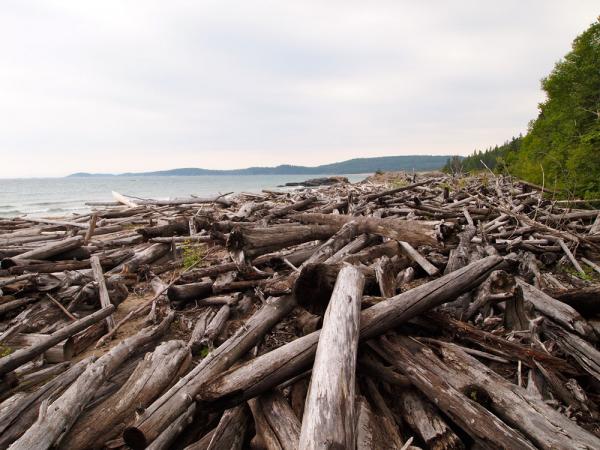
The Great Lakes are so massive they create their own climates, and microclimates. In summer the lakes help moderate temperatures by absorbing warm air and cooling the summer heat. In some places this buffering creates microclimates that allow cool summer temperatures and long growing seasons with late frosts. These microclimates create the perfect environment for growing fruits like apples, cherries and grapes usually found much further south. For this reason the Western shore of Lake Michigan is known as the "fruit belt."
In winter, ice forms a crust along the lake's outer rim. As it thickens and expands, the ice pushes huge logs up on the shores in places like this in Pukaskwa National Park, Ontario on Lake Superior. As winter deepens, the ice thickens and pushes inward but is unable to freeze the deep, open water in the middle of the lakes. As prevailing winds from the west roar over this surface water, they pick up warmer air and moisture creating snow as this air passes over the colder land surface. This "lake effect" drops tens of feet of snow every winter throughout some parts of the lakes creating a snowy winter wonderland for people throughout the Midwest.
Meltwater Marshlands

The grinding movement of the glaciers created innumerable indentations across the lands between the lakes, which have now filled in with water and form lakes, ponds, marshes, bogs and wetlands.
Some of these netherworlds between land and water occurred during the glaciers' retreat when enormous slabs of ice pierced deep into the land creating what are called "kettle holes" when they melted. Some of these kettle holes may be covered by lakes, form deep ponds, be filled in with sediment, or be part of bog communities today.
In other places throughout the lakes, such as this marsh near Lake Huron, freshwater seeps in low-lying areas allow water to penetrate inland creating wetlands. In these half-aquatic worlds, grasses and water plants thrive and form the basis of rich food chains. Plants like cattails, marsh marigolds, water lilies and marsh milkweed abound in these places, while abundant aquatic insects provide food for frogs and small vertebrates. This seasonal richness also attracts thousands of water birds that migrate over these water ways annually or take refuge here the year round.
Tiny dragons
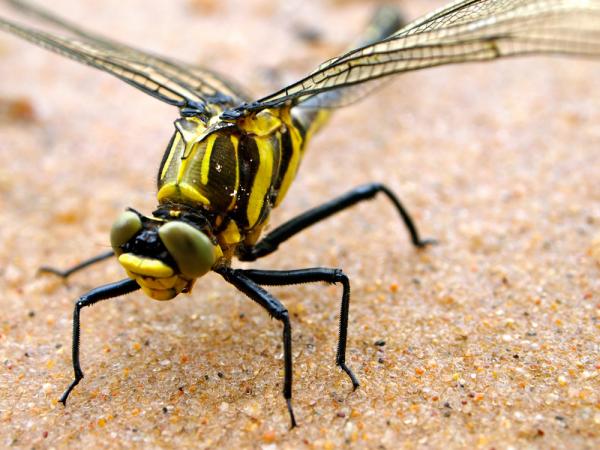
With long winters and brief summers, life around the lakes is shaped by the seasons. Plants and animals time their life cycles to seasonal changes and to one another. For instance, many birds that overwinter in tropical climates time their return to the lakes to perfectly coincide with the emergence of newly hatched insects. Insects in turn time their hatching to the emergence of new shoots and fresh green growth responding to warmer temperatures. These interwoven ecologies create a rich interdependent tapestry of life along the lakes.
Of all the amazing changes taking place in the spring, there are few as remarkable as those of aquatic insects. Within the course of days, huge clouds of stoneflies, mayflies, midges and numerous other aquatic insects may burst from the lake surface to frantically breed en masse, lay their eggs and die.
On certain nights when the moon is right, tens or hundreds of thousands of mayflies may be fluttering through the air. On the next night there may be only silence. Some of these hatches have been so immense they have even been seen on Doppler radar!
Meanwhile, other insects like this dragonfly (Hagenius brevistylus) emerge from the water in one form only to metamorphose into another, busily chomping mosquitoes on the wing throughout the summer.
Conservation
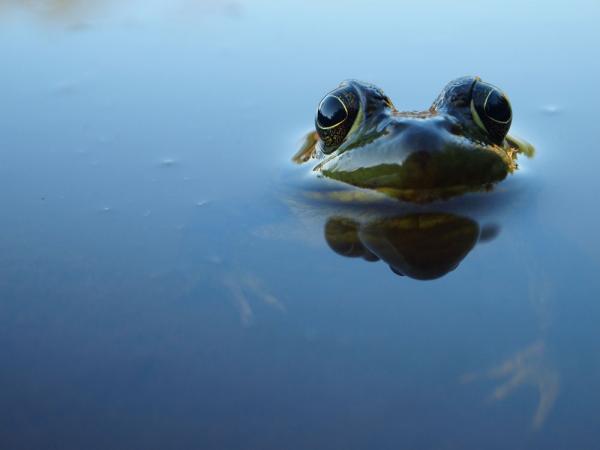
Before Europeans arrived at the Great Lakes, many Native American peoples lived along the shorelines harvesting wild plants, game and fish. Over 150 different fish species once existed in the Great Lakes, serving as a sort of indicator of the lake's health. Unfortunately today both the number of species and total numbers of fish harvested in the lakes are but a shadow of the diversity and bounty of species once found here. Overfishing, dams, logging and pollution from numerous industries around the lakes have taken a heavy toll on the ecosystem.
The 1800s were surely the heyday of exploitation on these shores with a burgeoning human population and rapid industrial developments happening throughout the country with few regulations in place to counter them. Since then much has been done to restore the Great Lakes through regulations like the Clean Water Act, signed in 1972 and the Great Lakes Water Quality Agreement between the United States and Canada.
Today the Great Lakes are much cleaner and healthier. Though they may never be as pristine as before European settlers arrived here, a tremendous amount of wildlife thrives throughout this ecosystem. Migrating water birds, fish, black bear, moose and innumerable other species like this Green Frog (Rana clamitans), in Michigan's Porcupine Mountains take refuge here.
Invasive species

Despite the push forward in environmental regulations to help the lakes, some problems seem here to stay and present long-lasting problems. Since the 1800s around 160 species have invaded the Great Lakes ecosystem, usually through ballast water in ships. For native species like this shy crayfish hiding in this clam shell covered in invasive zebra mussels, there is sometimes nowhere to escape this biological onslaught of change.
Introduced species like the zebra mussel (Dreisena polymorpha) become invasive species when they begin to outcompete and undermine the ability of native species to survive. Today the zebra mussel, a native to Asia, has been able to successfully spread to all of the Great Lakes, outcompete native mussels, reduce food and spawning grounds for fish, and cause massive clogging to industry. The zebra mussel alone has wrecked enormous ecological and economic damage throughout the Great Lakes ecosystem estimated in the billions of dollars.
Get the world’s most fascinating discoveries delivered straight to your inbox.
Plying the freshwater seas
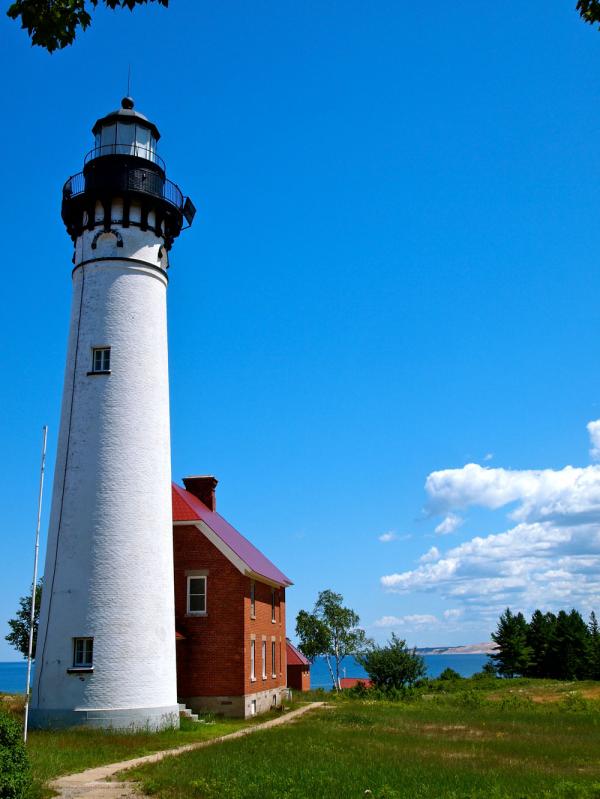
The massive freighters that still arrive in these freshwater seas from all over the world have a history dating as far back as the 1600s when the first cargo ships plied the Great Lakes under the French. In its day there were thousands of vessels converging across shipping lanes crisscrossing the Great Lakes.
During the 1800s great barges and freights plied the lakes transporting immigrants and goods like iron ore and coal to major shipping routes throughout the East by an ambitious collection of canals and waterways. Although freighters still ply the lakes today, goods and people are transported more quickly and economically overland.
Sudden, violent storms, dense fog and rocky shoals were a constant hazard for vessels traversing the Great Lakes. Though they are called lakes, these waters are more like giant inland seas. Just as on the ocean, these waters can be furious and unforgiving in rough weather luring many ships to their grave. For this reason, as on the ocean, many lighthouses line the rugged shorelines and islands up and down the Great Lakes helping ships find their way. This lighthouse lies off the coast of Grand Marais, Mich., on Lake Superior's Pictured Rocks National Lakeshore.
Graveyard of the Great Lakes
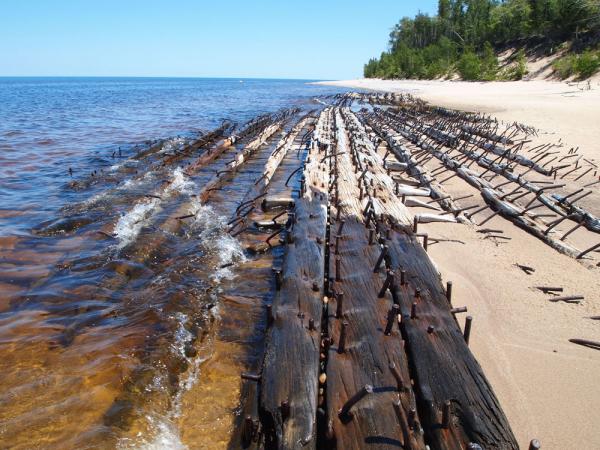
During sudden and severe storms many hundreds of ships met their end on the lakes, some disappearing without a trace. The sinking of the SS Edmund Fitzgerald was one of the most severe shipwrecks in Great Lakes' history . Wrecking on the shoals off Whitefish Point, Mich. on Nov. 10, 1975, in rough seas, the Fitzgerald was swallowed whole by Lake Superior with all 29 members of its crew perishing, never to be seen again.
The shoreline here at Whitefish Point on Lake Superior's Pictured Rocks National Lakeshore is so notorious for shipwrecks that it is known as the Graveyard of the Great Lakes. The rusting old behemoths that dot this rocky shoreline serve as reminders of the bygone era of Great Lakes shipping and continue to serve as a testament to the violent storms these waters are prone to.
The Big Waters
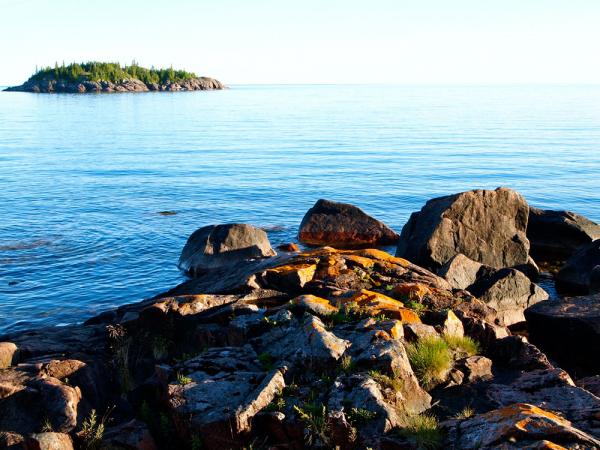
The Ojibwe and other First Nations had their own names for the lakes. In the Ojibwe language Lake Superior was known as "Gitche Gumee," or the "big water." It is a fitting name for Lake Superior, and together for all of these Great Lakes. These "big waters" hold over 20 percent of all the fresh surface water on our planet, create more coastline than both the East and West Coast of the lower 48 states combined, and are the great heart of the North American continent, bordering over eight U.S. states and one Canadian province.
Though these lakes are immense, their charms are best discovered one on one. Exploring the nuances of each of them is best done walking along their sandy beaches and craggy bays, camping on their forested shores, and visiting the towns and cities along the lake's natural harbors. Like living creatures, moody and alive, you may notice the Great Lakes shape-shift with the seasons and yet they have always remained our eternal, steady and timeless "big waters."


